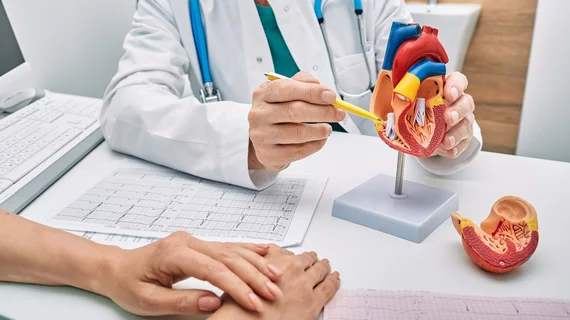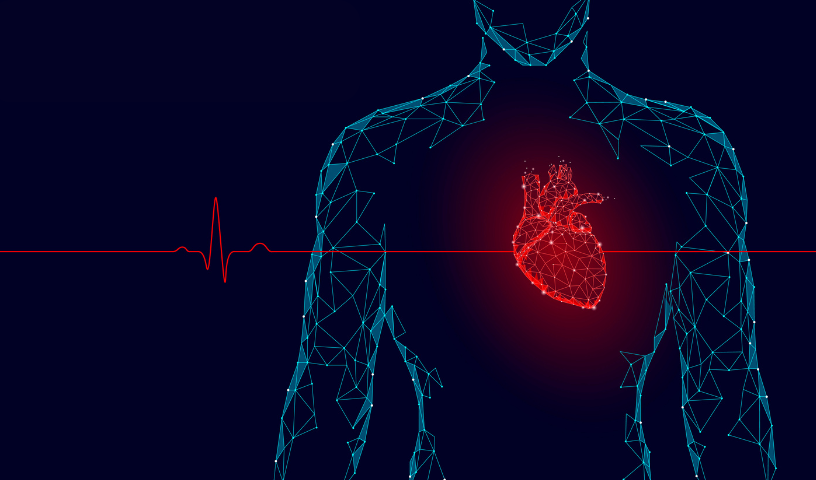The mind-heart connection through Cardiology care
Understanding the Value of Cardiology in Modern Health Care Solutions
Cardiology plays a crucial role in contemporary medical care, especially as heart illness remains to be the leading reason for mortality worldwide. Developments in diagnostics and therapy have changed person care, enabling earlier interventions and enhanced outcomes. Furthermore, the change in the direction of precautionary cardiology equips individuals to manage their health and wellness proactively. As modern technology proceeds to develop, the combination of innovative services might additionally redefine cardiology's influence on public health and wellness, motivating a more detailed examination of arising fads and their ramifications.
The Prevalence of Cardiovascular Disease and Its Influence On Public Health
Although cardiovascular disease continues to be the leading cause of death internationally, its impact extends far beyond private clients to affect public wellness systems and economic climates. The high prevalence of heart disease puts a substantial pressure on healthcare sources, requiring increased funding for therapy, recovery, and avoidance programs. Public health efforts have to deal with risk factors such as weight problems, smoking cigarettes, and sedentary way of lives, which add significantly to the increasing occurrence of heart conditions.Moreover, the financial problem linked with cardiovascular disease is immense, including not only straight clinical prices but also indirect expenses connected to shed productivity and early mortality. Areas encounter challenges in taking care of these costs, usually resulting in variations in healthcare accessibility and results. As the population ages and lifestyle-related risks continue to rise, the seriousness for efficient cardiology treatments ends up being paramount. Dealing with heart disease is not only a matter of individual health and wellness however likewise a vital public health and wellness concern.
Breakthroughs in Cardiac Diagnostics and Imaging Techniques
Recent developments in cardiac diagnostics and imaging techniques have revolutionized the field of cardiology, boosting the ability to find and keep an eye on cardiovascular disease. Methods such as cardiac MRI, CT angiography, and echocardiography have become increasingly advanced, supplying comprehensive photos of cardiac frameworks and features. These methods permit the very early recognition of conditions like coronary artery disease, heart failure, and valvular disorders.Moreover, developments in non-invasive diagnostics, such as wearable innovation and remote monitoring gadgets, have encouraged individuals and healthcare companies. These tools promote real-time monitoring of heart rhythms and other essential indicators, resulting in prompt interventions. Furthermore, expert system is being integrated into imaging analysis, enhancing precision and efficiency in diagnosis.
Developments in Treatment Alternatives for Heart Issues
Recent advancements in cardiology have actually resulted in substantial developments in therapy choices for heart problems. These include sophisticated medical methods that boost procedural results and arising medicines that offer brand-new methods for therapy. As the area evolves, these advancements play a vital function in improving client treatment and outcomes.
Advanced Surgical Techniques
Developments in medical techniques have changed the landscape of cardiology, offering new expect people with heart conditions. Minimally invasive treatments, such as catheter-based treatments, have considerably reduced healing times and hospital stays. Methods like robotic-assisted surgical procedure enhance precision, permitting cosmetic surgeons to navigate complicated physiological frameworks with greater accuracy. Advancements in imaging innovation assist in real-time visualization throughout procedures, improving outcomes. Transcatheter aortic valve replacement (TAVR) exemplifies an advancement in dealing with aortic constriction, making it possible for shutoff substitute without open-heart surgery. In addition, hybrid methods that integrate surgical and catheter-based techniques give customized options for numerous heart problems. These sophisticated surgical techniques not only enhance patient safety and security yet additionally increase therapy options, underscoring the crucial role of innovation in modern-day cardiology techniques.
Emerging Medications and Treatments
As the landscape of cardiology continues to evolve, arising medicines and therapies play an essential role in boosting therapy options for heart problems. Technologies such as novel anticoagulants and advanced lipid-lowering representatives have actually transformed the monitoring of cardio diseases, greatly lowering client morbidity and mortality. In addition, the advancement of genetics therapies and regenerative medication uses promising opportunities for treating problems previously regarded irreversible. Professional trials are continually exposing the efficiency of these treatments, pushing the borders of conventional therapies. The assimilation of digital health and wellness technologies assists in personalized medicine, enabling for customized therapy strategies based on genetic and way of living variables. Collectively, these developments emphasize the dynamic nature of cardiology, boosting client results and redefining criteria of treatment in modern healthcare.
The Function of Preventive Cardiology in Person Care
Preventive cardiology plays a crucial role in client care by concentrating on the recognition of risk aspects that add to cardiovascular disease. Through lifestyle modification techniques and early detection techniques, healthcare suppliers can properly lower the occurrence of cardio occasions - Cardiology Jupiter. This proactive technique not only enhances person outcomes yet additionally advertises lasting wellness
Threat Variable Recognition
While cardio diseases remain a leading reason for morbidity and death worldwide, reliable threat aspect identification functions as a cornerstone of preventative cardiology. Determining danger aspects such as hypertension, hyperlipidemia, household, and diabetic issues background is necessary for early treatment. Health care professionals make use of different evaluating techniques to review these aspects, allowing for customized safety nets. In addition, comprehending a client's lifestyle selections, such as cigarette smoking and physical lack of exercise, even more educates danger analyses. This complete analysis allows medical professionals to establish personalized care strategies targeted at mitigating threats. By prioritizing threat aspect recognition, health care systems can boost patient results and lower the overall problem of cardio diseases, eventually adding to improved public health and wellness approaches and resource allowance.
Way Of Living Adjustment Strategies
A wide variety of researches highlights the critical function of way of life alteration strategies in decreasing heart disease threat. These strategies encompass dietary modifications, raised physical task, smoking cessation, and weight management. By adopting a heart-healthy diet plan rich in fruits, vegetables, entire grains, and lean healthy proteins, people can decrease cholesterol degrees and blood pressure. Normal exercise reinforces the heart and boosts overall cardiovascular health. Additionally, quitting smoking cigarettes significantly decreases the danger of cardiovascular disease and improves healing rates for those with current conditions. Weight management better adds to cardio wellness by minimizing various other threat variables such as diabetes mellitus and hypertension. Carrying out these way of life alters not only promotes individual health yet additionally functions as a keystone of precautionary cardiology in client care.
Very Early Discovery Methods
Way of living alterations considerably contribute to decreasing heart disease dangers, but they are most reliable when matched with early detection methods. Precautionary cardiology highlights the significance of recognizing potential heart problems before they escalate into major conditions. Strategies such as high blood pressure surveillance, cholesterol testing, and advanced imaging technologies like echocardiograms play critical functions in assessing cardio health and wellness. Biomarkers and genetic screening also enhance the accuracy of early discovery, enabling customized preventive approaches. Normal heart risk assessments empower doctor to intervene proactively, possibly protecting against cardiac arrest and strokes (Cardiology). By incorporating these early discovery methods right into regular treatment, people can benefit from prompt way of living interventions and targeted therapies, inevitably improving results and boosting lifestyle
Integrating Modern Technology Into Cardiology Practices
As developments in modern technology proceed to reshape different areas, the integration of innovative tools and systems right into cardiology techniques has actually become vital for boosting person care and results. Telemedicine systems allow cardiologists to check patients remotely, enhancing access to care while minimizing the worry on healthcare facilities. Wearable devices, such as smartwatches, allow constant heart rate surveillance, signaling both physicians and clients to prospective problems in real-time. Furthermore, man-made intelligence (AI) is being used to examine huge quantities of heart information, helping in early diagnosis and customized treatment plans. Advanced imaging techniques, consisting of 3D echocardiography, boost visualization of heart frameworks, leading to much more specific treatments. Digital health and wellness records (EHRs) improve patient information monitoring, making certain that cardiologists have instant access to essential data. Together, these technical innovations are changing cardiology, promoting proactive monitoring and enhanced health outcomes for clients with cardiovascular problems.
The Relevance of Individual Education and Interaction
Client education and learning and interaction play a pivotal function in the management of cardio health. By furnishing patients with understanding regarding their problems, therapy options, and way of living modifications, doctor empower individuals to take an energetic role in their care. This aggressive strategy can result in boosted adherence to prescribed medicines, nutritional changes, and exercise programs, inevitably decreasing the threat of complications.Engagement also promotes a solid patient-provider partnership, encouraging open communication and depend on. When people feel informed and entailed, they are more likely to voice worries and ask inquiries, which can bring about better medical results. Furthermore, instructional sources, such as workshops or electronic platforms, can enhance understanding and promote self-management techniques. In general, focusing on individual education and learning and involvement is crucial for enhancing cardiovascular health, enhancing lifestyle, and minimizing health care expenses connected with cardio illness.
Future Trends in Cardiology and Their Possible Influence

Often Asked Questions
What Lifestyle Adjustments Can Lower Cardiovascular Disease Danger?
The present question addresses lifestyle adjustments that can substantially minimize heart problem danger. Cardiologist near me. Taking on a well balanced diet, involving in routine exercise, maintaining a healthy and balanced weight, handling tension, and avoiding cigarette can significantly improve cardio health and wellness
How Can I Identify Early Signs of Heart Troubles?
Acknowledging very early indications of heart problems entails monitoring signs and symptoms such as breast pain, lack of breath, tiredness, and irregular heart beat. Timely recognition of these signs can motivate needed medical analysis and intervention for far better results.
What Are the Differences In Between Cardiologists and Cardiac Surgeons?
The distinctions between cardiologists and heart cosmetic surgeons exist in their roles; cardiologists mostly diagnose and handle heart conditions with non-invasive approaches, while cardiac doctors carry out surgeries to fix architectural heart concerns. Each plays an important, distinctive role.

Exactly how Commonly Should I Get My Heart Health Checked?
The regularity of heart medical examination varies based on specific danger elements. Generally, grownups must go through assessments each to 2 years, while those with current problems might need even more constant evaluations as advised by medical care professionals.
What Duty Does Genetics Play in Cardiovascular Disease Threat?
Genetics considerably influences cardiovascular disease danger, with familial patterns showing inherited problems. Certain genes can incline individuals to high blood pressure, cholesterol issues, and Learn More various other cardiovascular troubles, highlighting the value of genetic testing in evaluating heart wellness. Heart disease stays the leading reason of death globally, its effect expands far past private people to affect public wellness systems and economies. Public health and wellness initiatives need to address danger variables such as weight problems, smoking cigarettes, and inactive way of livings, which contribute considerably to the climbing incidence of heart conditions.Moreover, the economic worry associated with heart illness is tremendous, encompassing not only straight clinical costs however additionally indirect expenses associated to shed performance and premature mortality. Precautionary cardiology plays a crucial role in view it now individual treatment by concentrating on the identification of risk elements that add to heart condition. Artificial intelligence (AI) and device discovering are boosting diagnostics and patient monitoring, allowing very early detection of heart conditions. The differences in between cardiologists and heart cosmetic surgeons exist in their roles; cardiologists primarily handle and identify heart conditions with non-invasive methods, while heart doctors execute surgical procedures to correct structural heart problems.